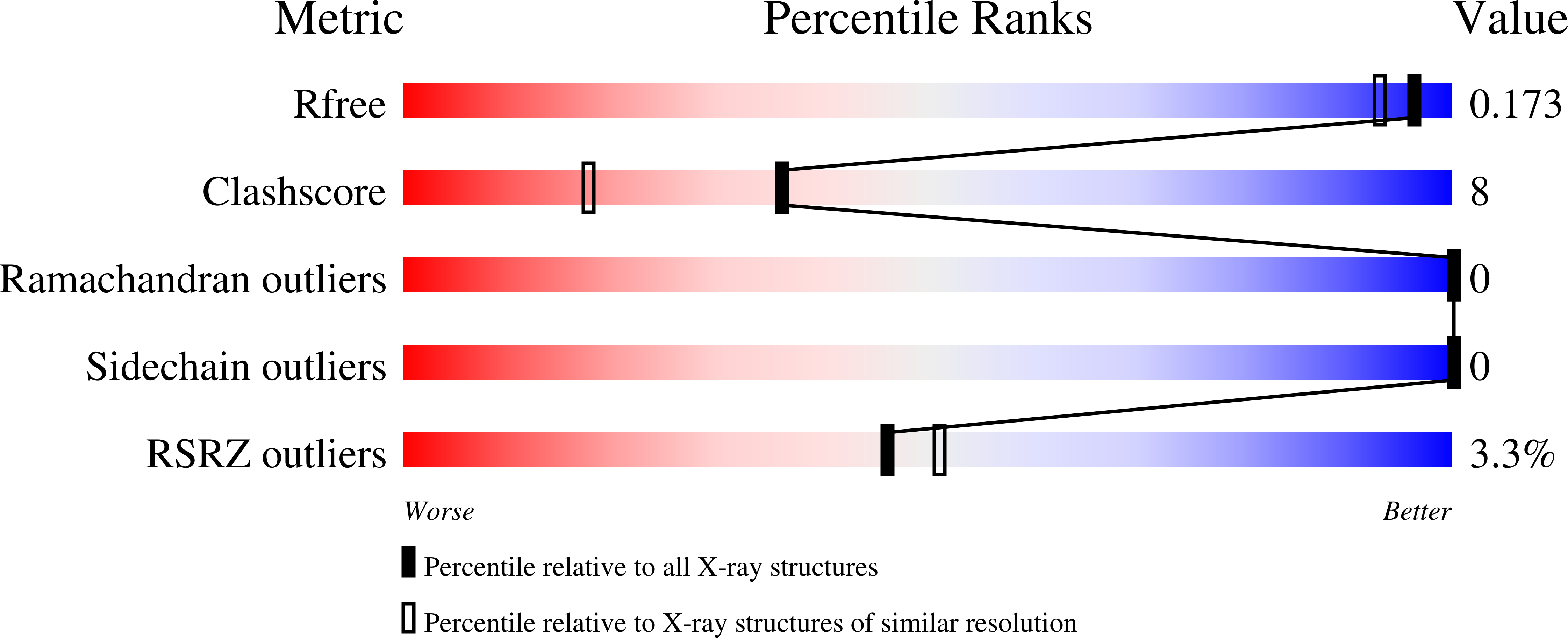Role of hydrogen bond alternation and charge transfer states in photoactivation of the Orange Carotenoid Protein.
Yaroshevich, I.A., Maksimov, E.G., Sluchanko, N.N., Zlenko, D.V., Stepanov, A.V., Slutskaya, E.A., Slonimskiy, Y.B., Botnarevskii, V.S., Remeeva, A., Gushchin, I., Kovalev, K., Gordeliy, V.I., Shelaev, I.V., Gostev, F.E., Khakhulin, D., Poddubnyy, V.V., Gostev, T.S., Cherepanov, D.A., Polivka, T., Kloz, M., Friedrich, T., Paschenko, V.Z., Nadtochenko, V.A., Rubin, A.B., Kirpichnikov, M.P.(2021) Commun Biol 4: 539-539
- PubMed: 33972665
- DOI: https://doi.org/10.1038/s42003-021-02022-3
- Primary Citation of Related Structures:
6T6K, 6T6M, 6T6O - PubMed Abstract:
Here, we propose a possible photoactivation mechanism of a 35-kDa blue light-triggered photoreceptor, the Orange Carotenoid Protein (OCP), suggesting that the reaction involves the transient formation of a protonated ketocarotenoid (oxocarbenium cation) state. Taking advantage of engineering an OCP variant carrying the Y201W mutation, which shows superior spectroscopic and structural properties, it is shown that the presence of Trp201 augments the impact of one critical H-bond between the ketocarotenoid and the protein. This confers an unprecedented homogeneity of the dark-adapted OCP state and substantially increases the yield of the excited photoproduct S*, which is important for the productive photocycle to proceed. A 1.37 Å crystal structure of OCP Y201W combined with femtosecond time-resolved absorption spectroscopy, kinetic analysis, and deconvolution of the spectral intermediates, as well as extensive quantum chemical calculations incorporating the effect of the local electric field, highlighted the role of charge-transfer states during OCP photoconversion.
Organizational Affiliation:
Faculty of Biology, M.V. Lomonosov Moscow State University, Moscow, Russia.

















